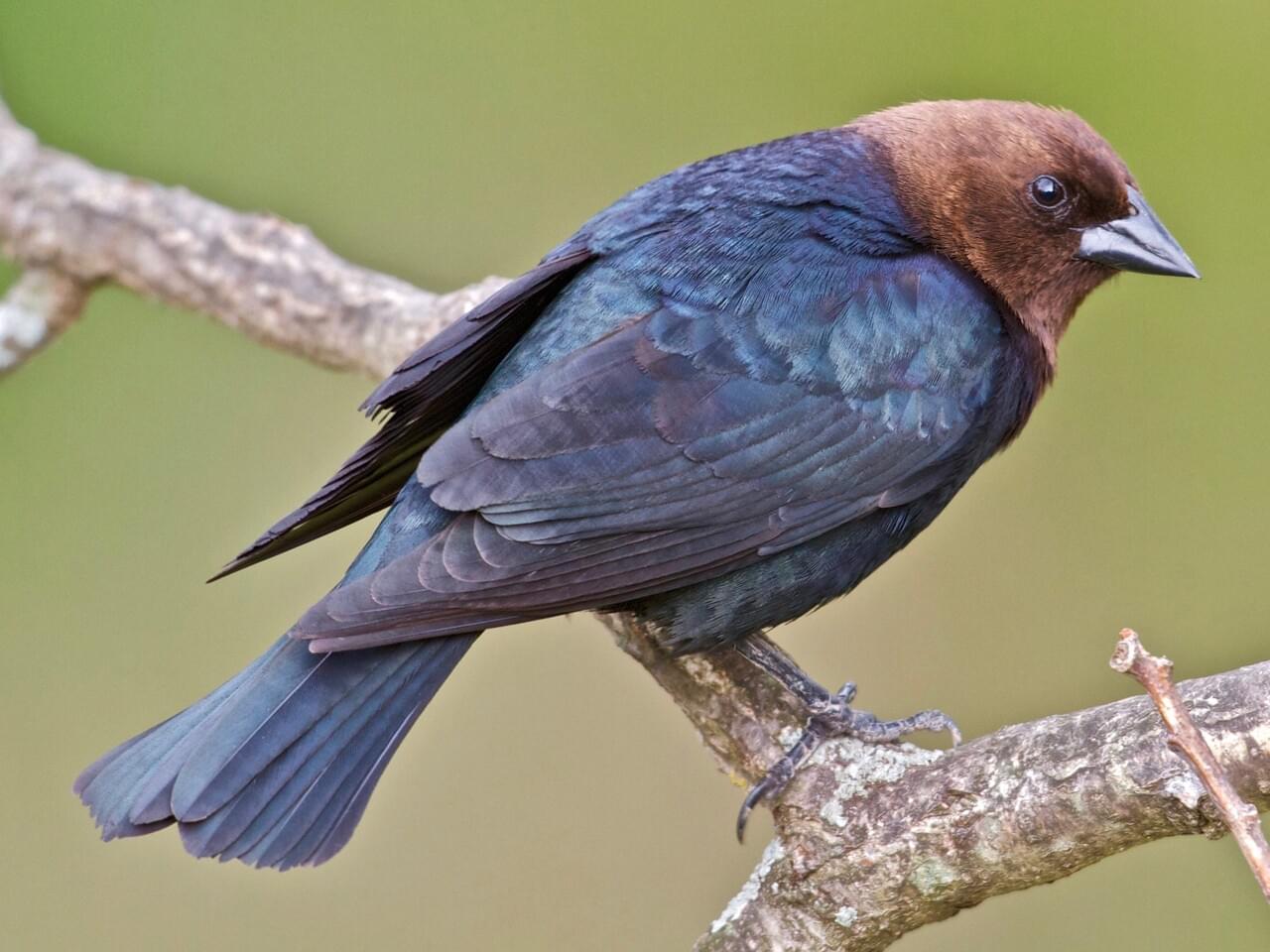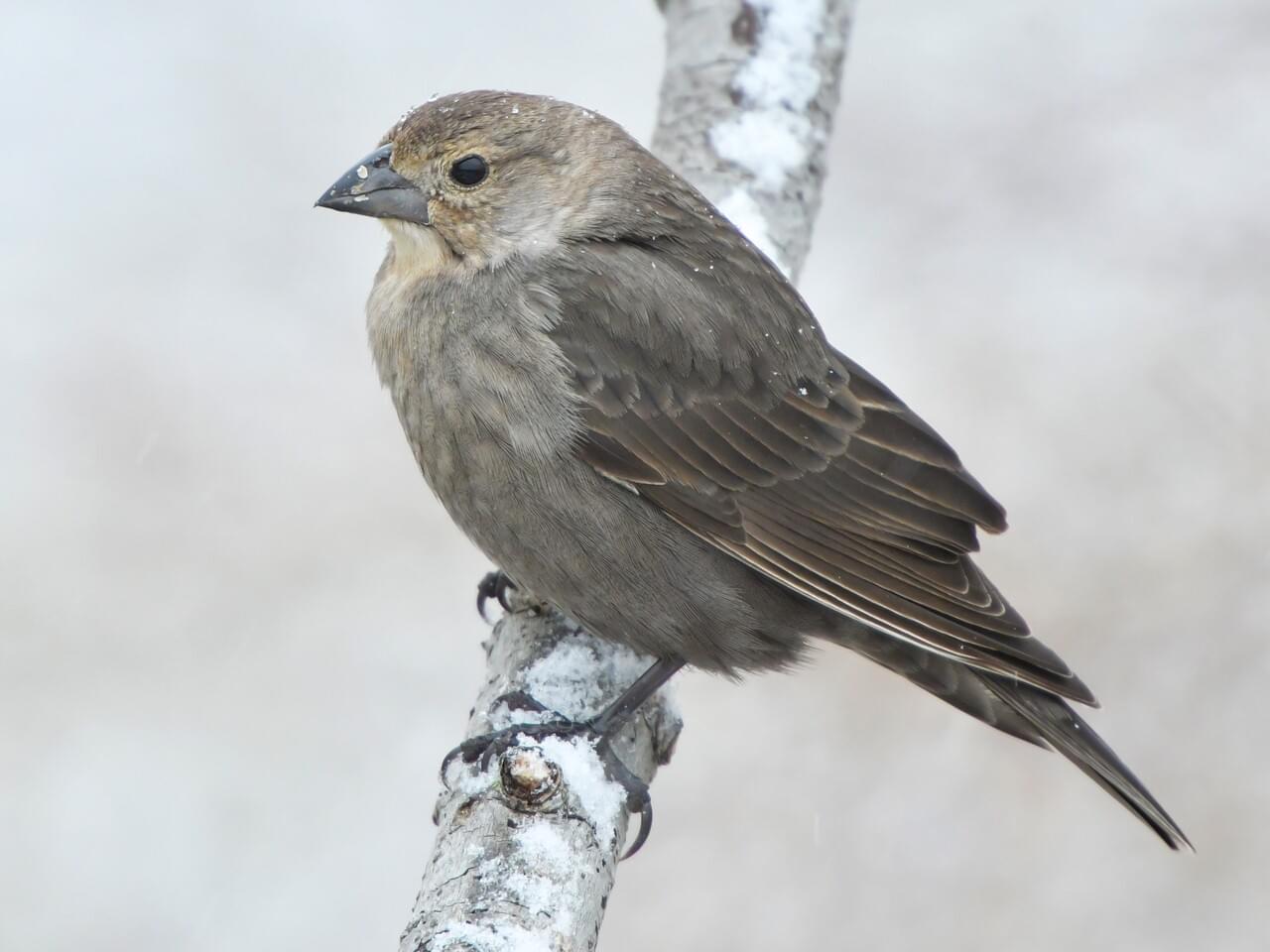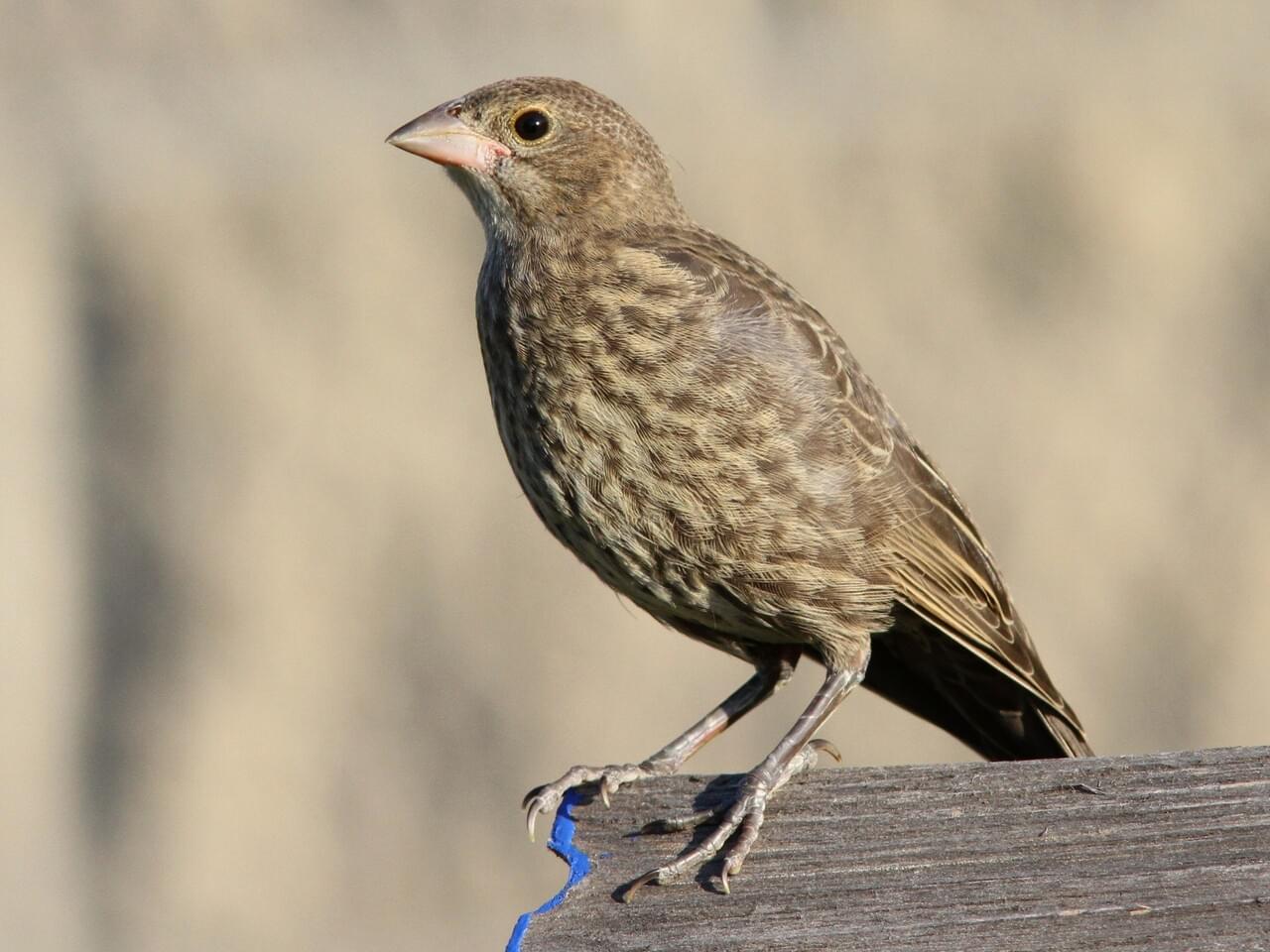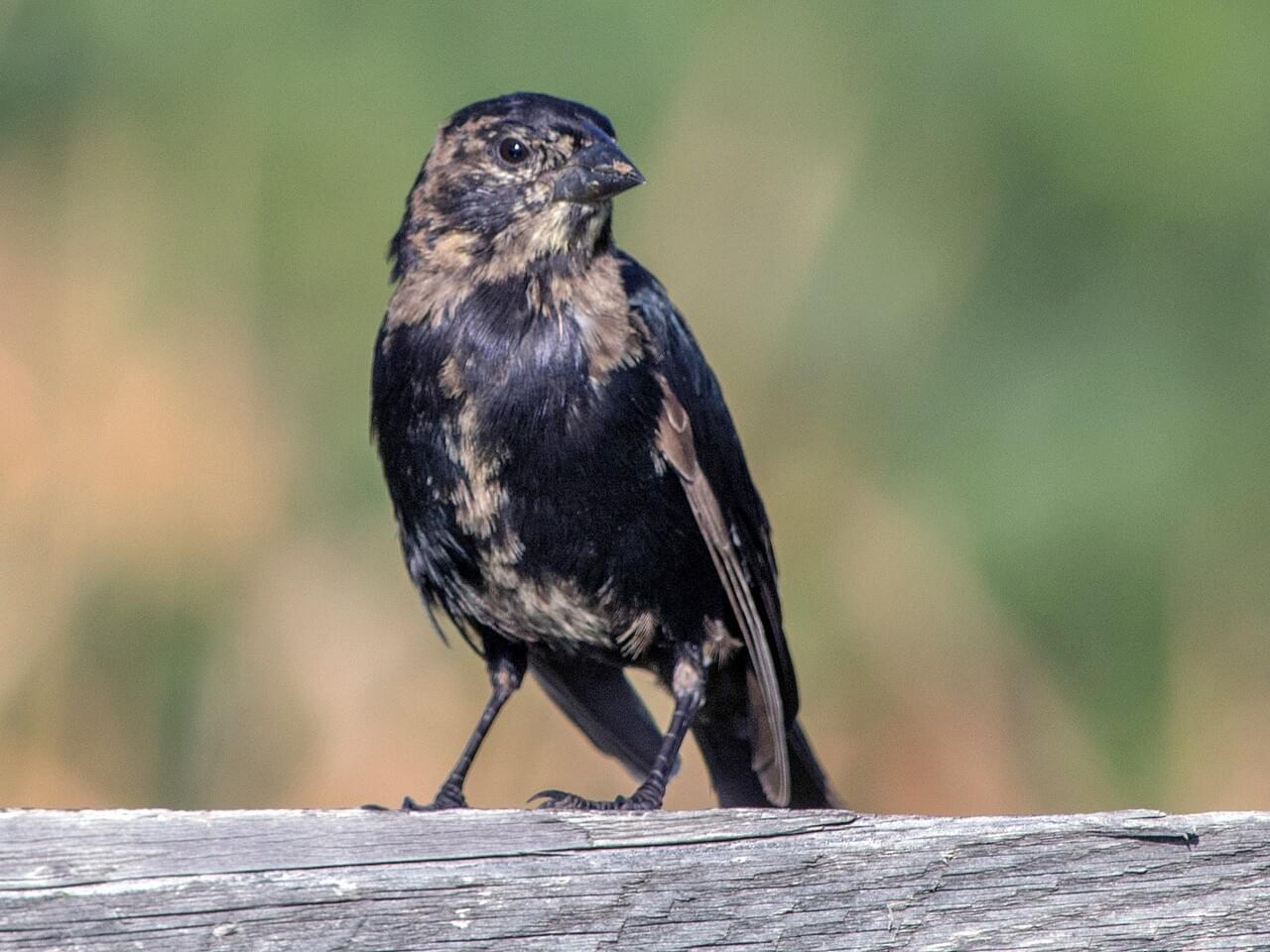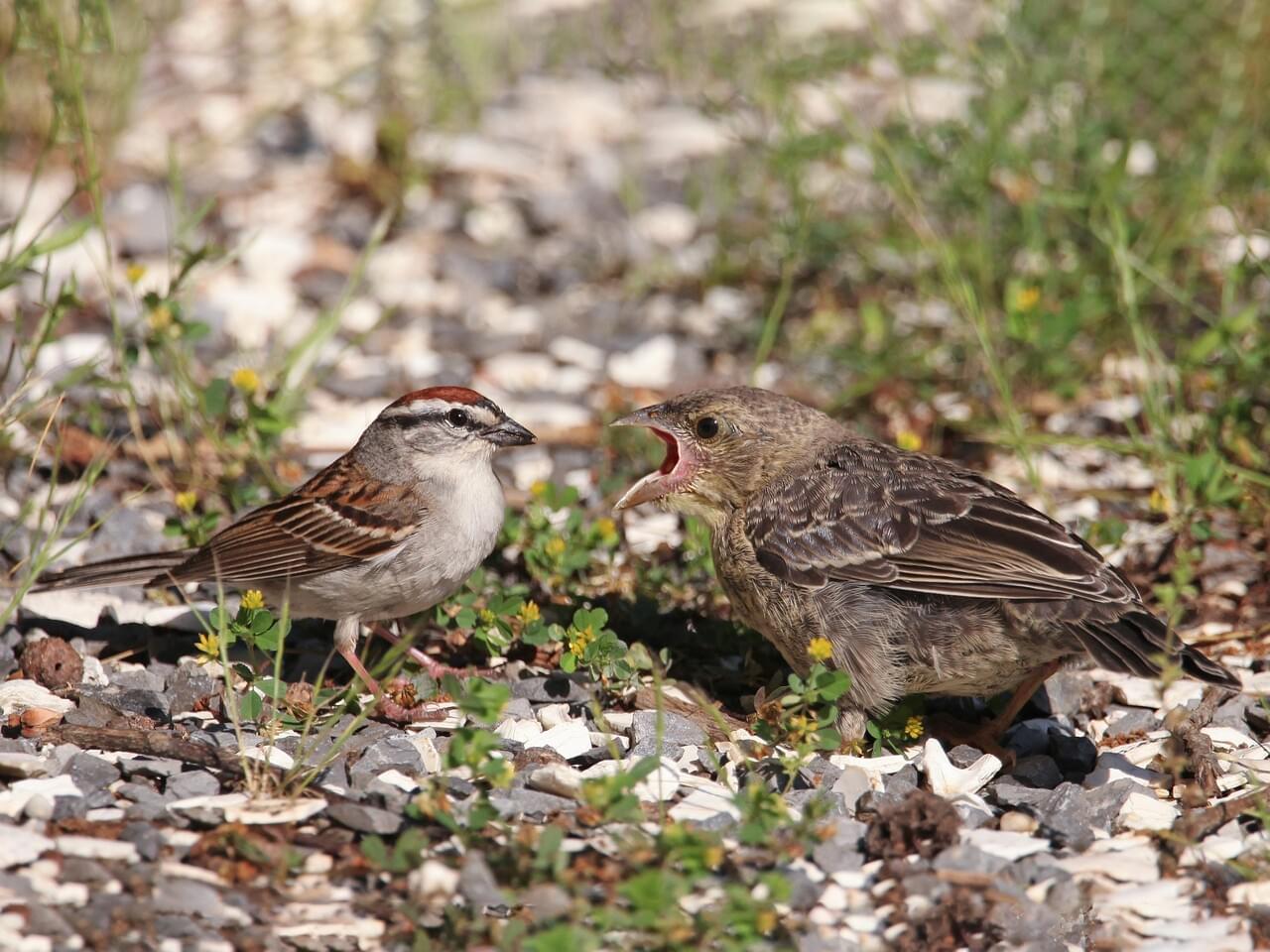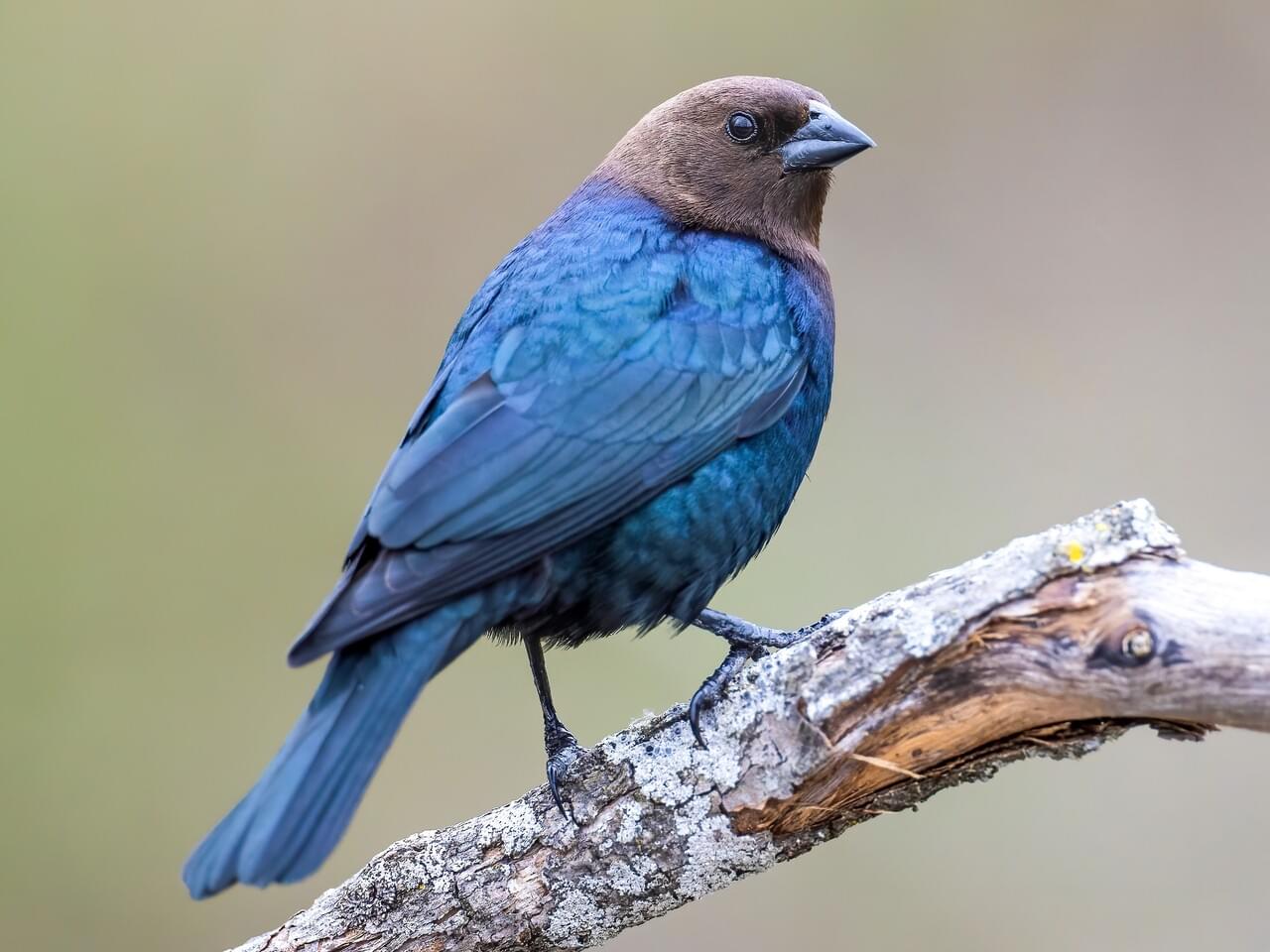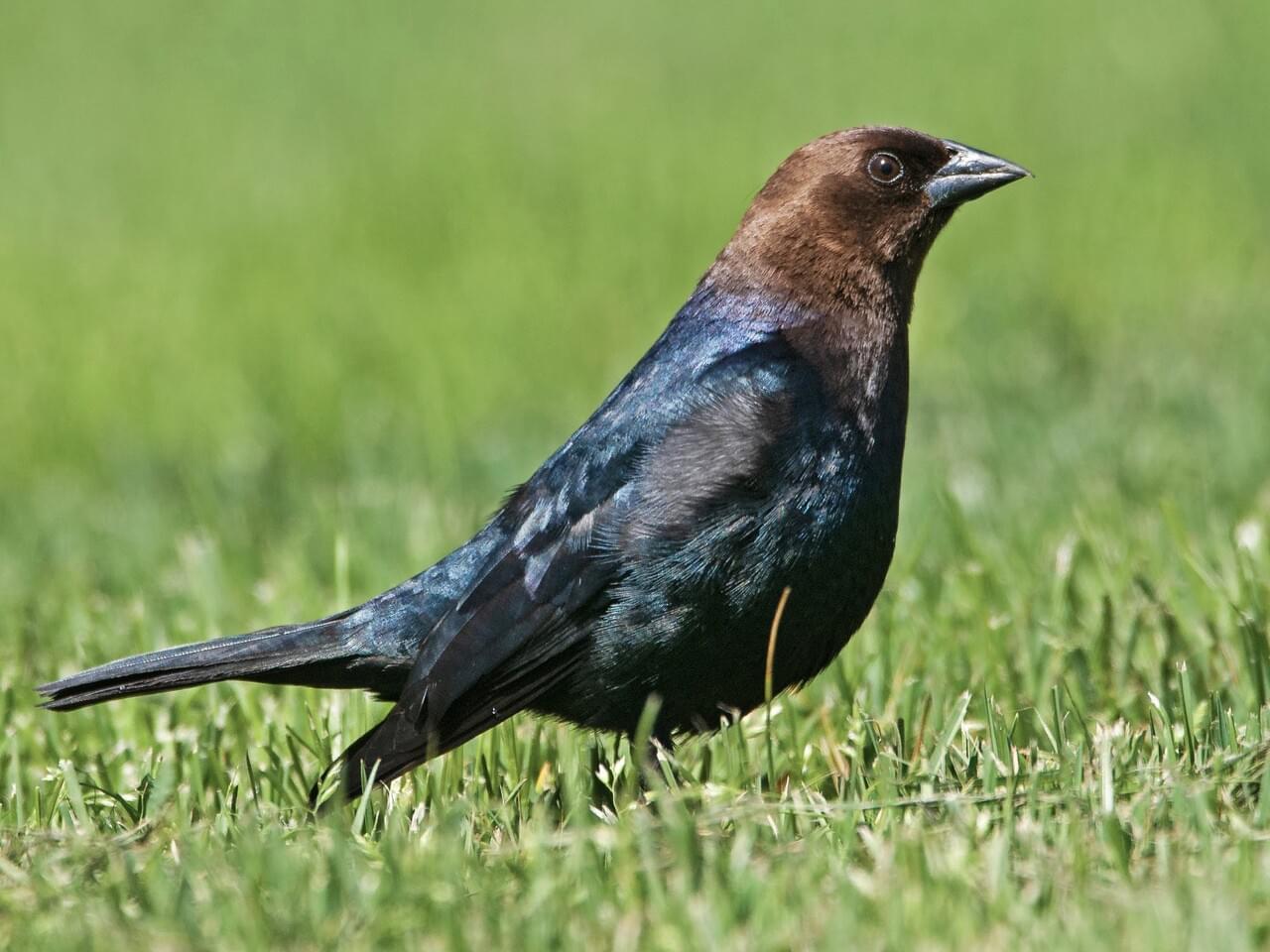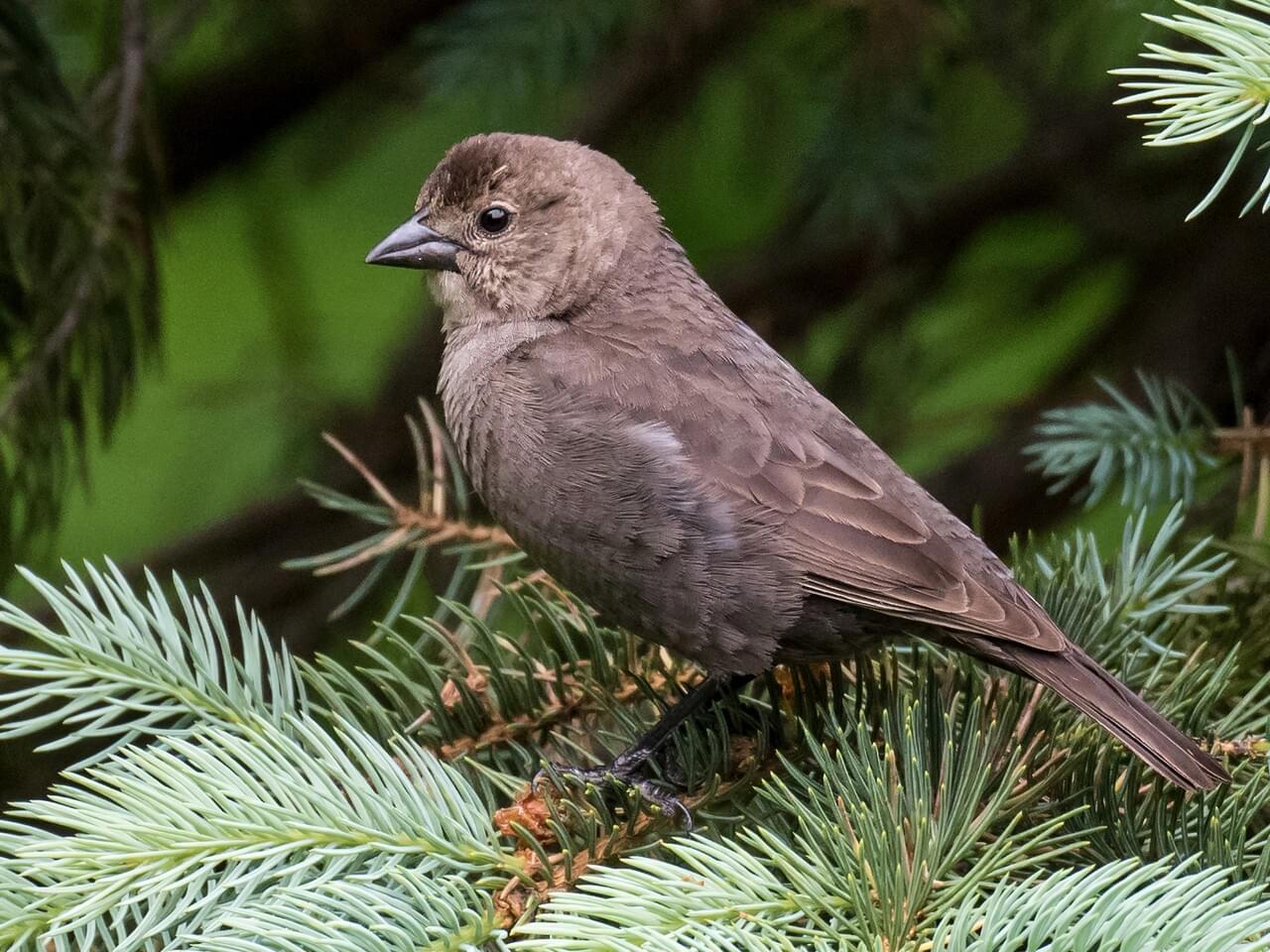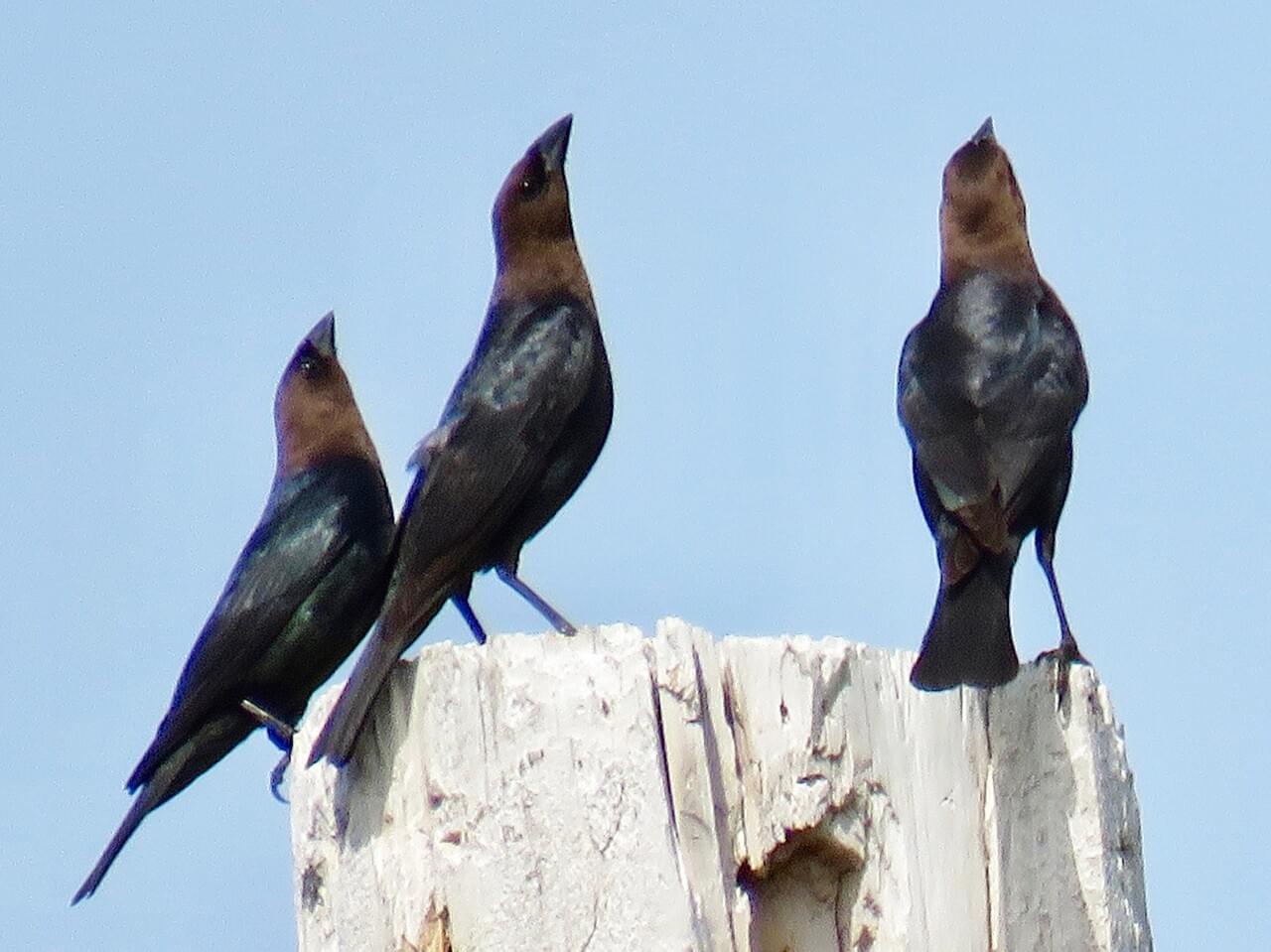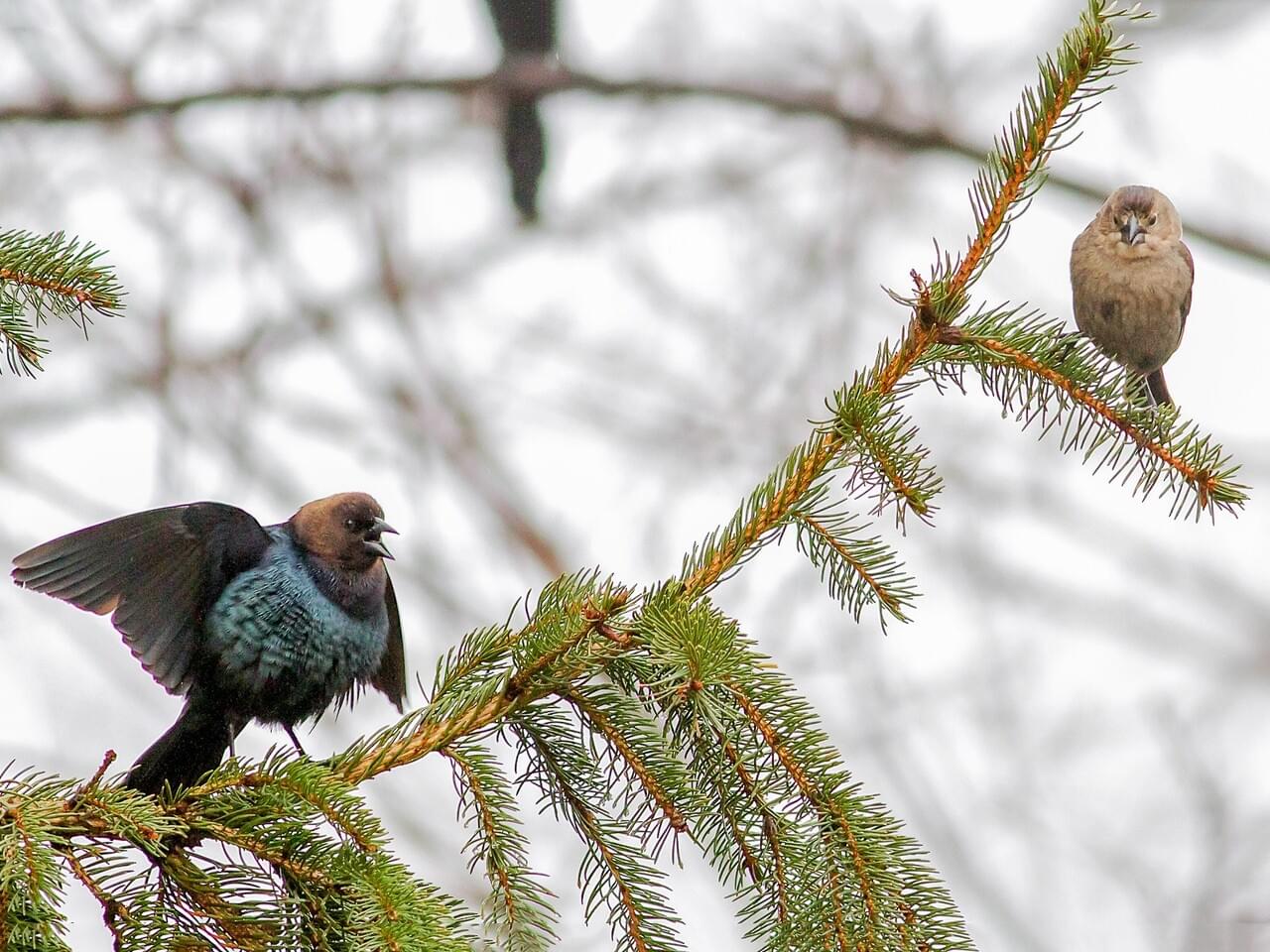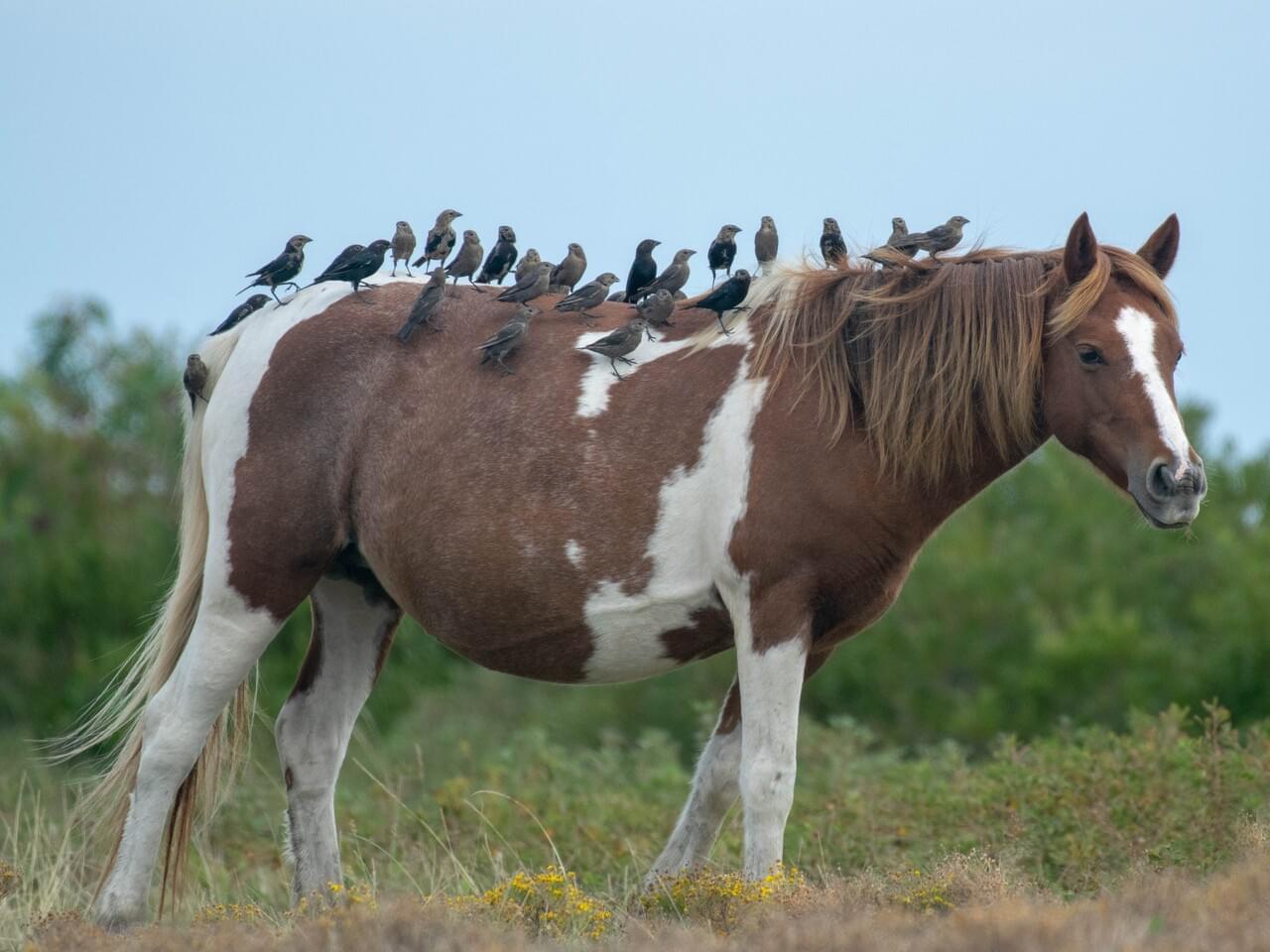 Photo ©
Liz Clayton Fuller
Photo ©
Liz Clayton Fuller
Brown-headed Cowbird
Main Focal Species
The Brown-headed Cowbird is a stocky blackbird with a fascinating approach to raising its young. Females forgo building nests and instead put all their energy into producing eggs, sometimes more than three dozen a summer. These they lay in the nests of other birds, abandoning their young to foster parents, usually at the expense of at least some of the host’s own chicks. Once confined to the open grasslands of middle North America, cowbirds have surged in numbers and range as humans built towns and cleared woods.
Range
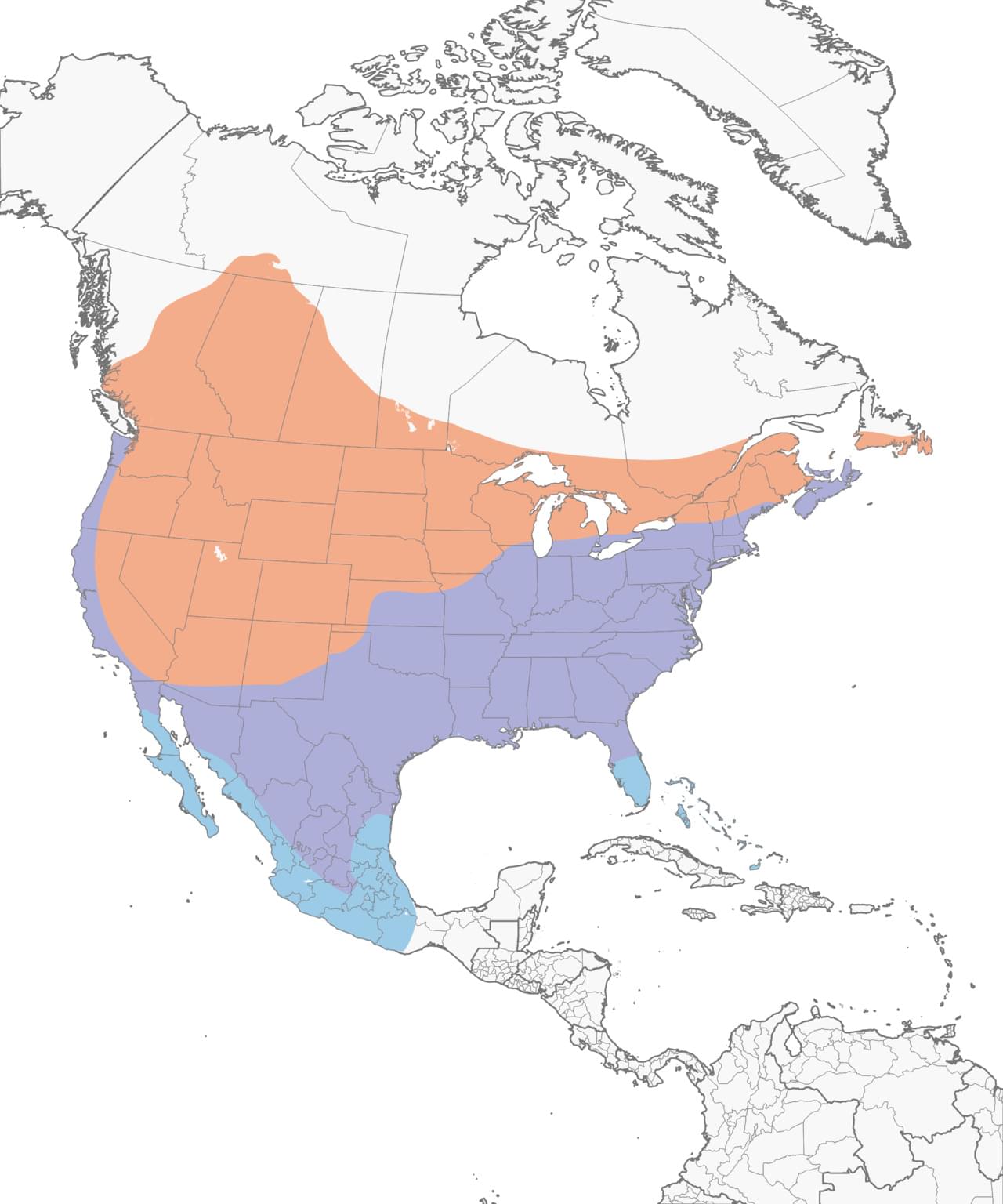
Habitat
Brown-headed Cowbirds occur in grasslands with low and scattered trees as well as woodland edges, brushy thickets, prairies, fields, pastures, orchards, and residential areas. Brown-headed Cowbirds generally avoid forests. Development and fragmentation of forests in the eastern United States have allowed Brown-headed Cowbirds to greatly expand their range eastward. In winter, Brown-headed Cowbirds roost along with several species of blackbirds in flocks numbering more than 100,000 birds.
Food
Brown-headed Cowbirds feed mostly on seeds from grasses and weeds, with some crop grains. Insects such as grasshoppers and beetles, often caught as cows and horses stir them into movement, make up about a quarter of a cowbird’s diet. As you might imagine, female cowbirds have a large calcium requirement from laying so many eggs. To satisfy it, they eat snail shells and sometimes eggs taken from nests they’ve visited.
Behavior
Brown-headed Cowbirds usually forage on the ground in mixed flocks of blackbirds, grackles, and starlings. They get their name from their close association with grazing livestock (and formerly bison), which flush up insects for the birds to eat. Cowbirds fly directly, with constant wingbeats. When males sing, they often raise their back and chest feathers, lift their wings and spread their tail feathers, and then bow forward. Groups of males may do this together. Female Brown-headed Cowbirds don’t build a nest or rear young. They find nests by watching quietly for signs of other birds building nests, or they flutter through vegetation trying to flush birds from their nests. When young cowbirds hatch, they may roll the other eggs out of the nest.
Nesting
Doesn’t build its own nest. Experiments done with artificial nests in an aviary suggest that Brown-headed Cowbirds tend to choose nests containing eggs of smaller volume than their own.
Appearance
Typical Sound

© Glen Chapman / Macaulay Library
Size & Shape
Brown-headed Cowbirds are smallish blackbirds, with a shorter tail and thicker head than most other blackbirds. The bill has a distinctive shape: it’s much shorter and thicker-based than other blackbirds', almost finch-like at first glance. In flight, look for the shorter tail.
Color Pattern
Male Brown-headed Cowbirds have glossy black plumage and a rich brown head that often looks black in poor lighting or at distance. Female Brown-headed Cowbirds are plain brown birds, lightest on the head and underparts, with fine streaking on the belly and a dark eye.
Plumage Photos
Similar Species
Cowbirds are smaller and shorter-tailed than other members of the blackbird family, with a shorter, thicker bill. The brown head of male Brown-headed Cowbirds can be difficult to see in poor light, so body shape and bill shape are the best clues. Female cowbirds are much less streaky than female Red-winged Blackbirds. Common Grackles are larger, longer-tailed, and lankier than Brown-headed Cowbirds. Male grackles and Brewer's Blackbirds show more iridescent colors in full light. Bronzed Cowbird and the rare Shiny Cowbirds of southern states are quite similar, but lack the male's brown hood and have longer bills.
Did you know?!
- Cowbirds are incapable of nesting, incubating or raising their own chicks. Instead, they lay their eggs in the nests of other bird species, which then raise the young cowbirds.
- When a cowbird lays an egg in another bird's nest (called the "host" bird), it usually tosses out one of the host's eggs. If a host bird does remove a cowbird egg, the cowbird may retaliate by returning and destroying all of the host's remaining eggs.
- The Brown-headed Cowbird lays eggs in the nests of many different species of birds, but most females specialize on one particular host species.
- In one case, a cowbird laid her egg in the nest of a Ruby-throated Hummingbird. The egg completely filled the nest and never hatched.
- Many birds have evolved ways of rejecting cowbird eggs. The Yellow Warbler, for example, will build a new nest lining over the cowbird's eggs if she finds them in her nest.
